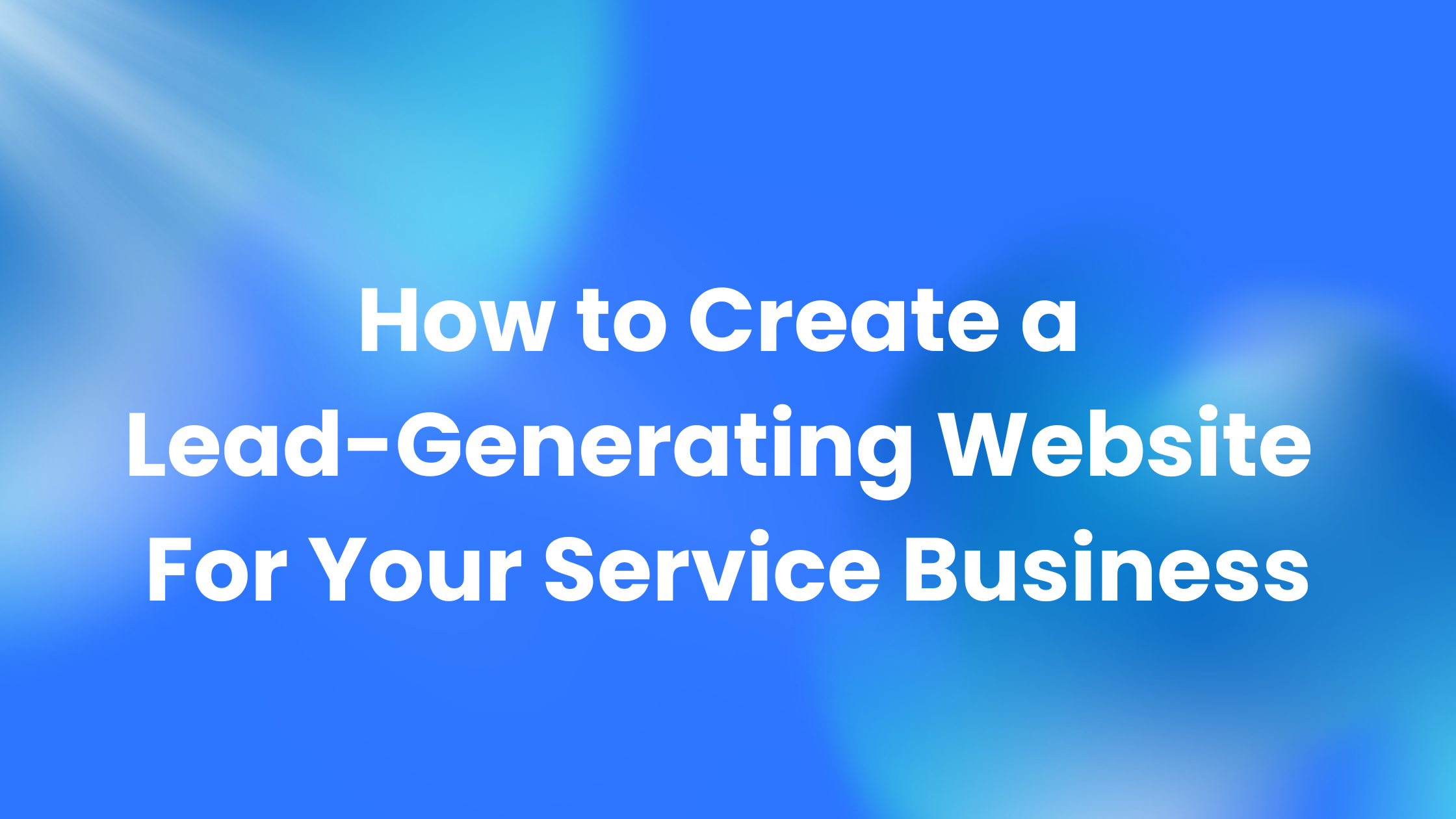How to Create a Lead-Generating Website for Your Service Business in 2024
In today’s competitive digital landscape, having a website that drives leads is crucial for any service business. A website can either be your best salesperson or just an online placeholder. In fact, 75% of users judge a business’s credibility based on its website design! This guide will show you how to build and create a lead generating website that not only attracts visitors but converts them into paying customers. Let’s explore key strategies that will make your website an efficient tool for business growth.
Understanding the Importance of User Experience (UX)
The foundation of any lead-generating website is user experience. It’s not just about how pretty the website looks, but how easy it is for users to navigate and find the information they need. Here’s how you can optimize your site for UX:
- Clean and Simple Design: A cluttered design can overwhelm visitors, leading to high bounce rates. Keep it simple, with clear menus and minimal distractions.
- Responsive Across Devices: With the increasing use of mobile devices, a responsive design that works seamlessly on smartphones and tablets is crucial. In 2024, over 60% of web traffic comes from mobile devices.
- Easy Navigation: Visitors should be able to find what they’re looking for in three clicks or less. Clear, intuitive menus and search features help guide visitors to the right content.
Crafting Compelling Calls to Action (CTAs)
A key feature of any lead-generating website is the Call to Action (CTA). These are the buttons or links that encourage visitors to take the next step, whether that’s filling out a form, scheduling a call, or downloading a resource.
- Be Direct and Action-Oriented: Use strong, direct language like “Get a Free Quote” or “Schedule a Consultation.” Avoid vague phrases like “Learn More” or “Click Here.”
- Placement Matters: CTAs should be strategically placed on every page. The homepage, landing pages, and even blog posts should have a clear next step for the reader.
- Test Different CTAs: Experiment with different versions to see which one gets more clicks. A/B testing can help you fine-tune your calls to action for maximum impact.
Optimizing for SEO and Local Search
Your website won’t generate leads if potential customers can’t find it. Search engine optimization (SEO) is the key to making sure your site ranks high on Google, especially for local service businesses.
- On-Page SEO Basics: Make sure your site includes relevant keywords, meta descriptions, alt text for images, and properly structured URLs. These on-page elements help search engines understand what your site is about.
- Local SEO: If your service business caters to a specific area, optimizing for local SEO is essential. This means using location-based keywords and setting up your Google My Business profile.
- Long-Tail Keywords: Instead of focusing only on generic terms like “plumbing services,” target long-tail keywords like “emergency plumbing services in [Your City].” These specific phrases often have lower competition and higher conversion rates.
Content That Converts Visitors Into Leads
The content on your website should do more than just inform visitors—it should convert them into leads. High-quality, engaging content builds trust and encourages visitors to take action.
- Solve Customer Pain Points: Your content should address the needs and concerns of your target audience. For example, if you’re a pest control business, write about how to prevent common infestations or what to do if you suspect termites.
- Use Landing Pages: These are dedicated pages designed to convert visitors into leads. A landing page could offer a free resource in exchange for an email address or invite users to schedule a consultation.
- Showcase Testimonials and Case Studies: Social proof is a powerful tool in conversion. Share reviews from happy customers or case studies that show the positive impact your services have had.
Lead Capture Forms and Their Best Placement
Your website’s lead capture forms are essential for turning visitors into contacts. However, where and how you place them makes all the difference.
- Strategic Placement: Lead capture forms should be placed where visitors are most likely to take action. Key spots include your homepage, the footer of blog posts, and dedicated landing pages.
- Make It Easy: The form should be simple, asking only for necessary information (e.g., name, email, and phone number). Longer forms can deter visitors from filling them out.
- Offer a Lead Magnet: Incentivize visitors to fill out the form by offering something of value, such as a free guide, discount, or consultation.
Integrating Social Proof to Build Trust
When potential clients visit your website, they need to trust that your service will deliver results. This is where social proof comes in.
- Display Client Logos or Partnerships: If you’ve worked with notable clients or partnered with respected companies, showcase these logos prominently on your homepage or testimonials page.
- Share Customer Reviews: Make sure to include verified customer reviews and star ratings to build credibility.
- Use Trust Badges: Certifications, awards, and professional affiliations lend authority to your business. Display these badges on your website to boost confidence.
Mobile Optimization and Its Impact on Leads
With mobile web traffic continuing to rise, it’s vital that your site looks and performs well on smaller screens. Google even favors mobile-optimized sites in search rankings, meaning a poor mobile experience can hurt both your SEO and conversion rates.
- Responsive Design: Ensure your website adjusts automatically to fit any screen size. This ensures a seamless experience whether a visitor is using a smartphone, tablet, or desktop.
- Fast Load Times: Mobile users expect quick load times. Compress images and leverage browser caching to make sure your site loads fast on all devices.
- Easy-to-Use Forms: Make sure your lead capture forms are mobile-friendly. Test them on a smartphone to ensure they’re easy to fill out.
Tracking and Analyzing Website Performance
To make sure your website is doing its job, it’s important to track its performance regularly. Google Analytics and other tools can give you insights into how users are interacting with your site and where improvements can be made.
- Monitor Key Metrics: Keep an eye on important performance indicators like bounce rate, conversion rate, and average session duration. A high bounce rate may mean users are leaving your site before taking any action.
- Use A/B Testing: Test different versions of your landing pages, CTAs, and forms to see what drives the best results.
- Continuous Optimization: Based on the data you gather, continually refine your site. This might mean improving your SEO, redesigning certain pages, or adjusting CTAs to increase lead generation.
Conclusion: How to Create a Lead-Generating Website
Your website is the foundation of your service business’s lead generation strategy. By focusing on user experience, SEO, and conversion-driven content, you can turn visitors into leads and leads into clients. Ready to take your website to the next level? Start applying these tips today, and watch your service business grow! If you need expert help building a high-converting website, get in touch with us.








